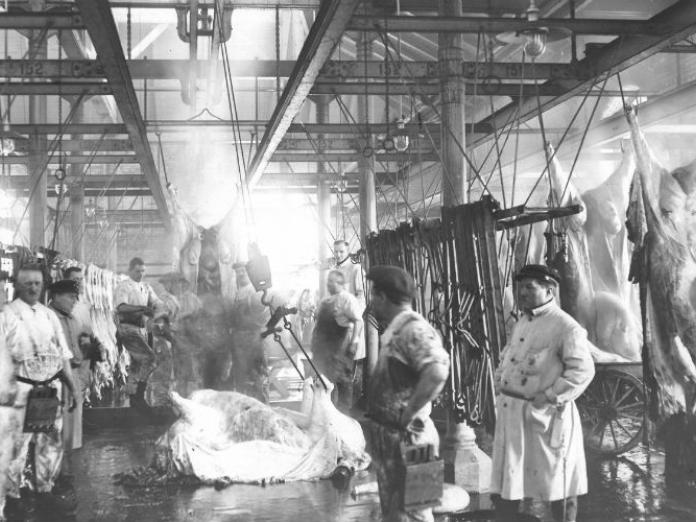The history of The Meatpacking District

A short introduction in english
Copenhagen Meatpacking District consists of three large areas named The White Meatpacking District, The Grey Meatpacking District and The Brown Meatpacking District.
Copenhagen Meatpacking District is built over a period of 50 years. Øksnehallen in the Brown Meatpacking District was finished in 1901 and the White Meatpacking District was opened in april 1934. The White Meatpacking District is famous for the functionalistic architecture and was at the opening a trendsetting place for meatproducing facilities.
The Brown and White Meatpacking District is listed and thereby protected by law. Furthermore are both The White Meatpacking District and the Brown Meatpacking District protected as one of the 25 national industrial memorials in Denmark.
The White Meatpacking District
The White Meatpacking District is a unique 871.000 sq. feet property owned by the Municipality of Copenhagen Denmark and home of meat companies, creative industries, supermarkets, galleries, and restaurants. It is in other words Copenhagen Meatpacking District.
The area is being developed by Copenhagen Properties to contain artists, galleries, meat industries, creative and gastronomic trendsetters all blended together in the caracteristic white buildings primarily from 1934.
The Grey Meatpacking District
The Grey Meatpacking District is a smaller areal with cultural activities, restaurants, offices, and meat industries. The Grey Meat City is not listed, but still under protecting because of its importance in the Danish industrial history.
The Brown Meatpacking District
The Brown Meatpacking District contains various schools, a theater, hotel- and conference facilities, a swim centre and a beautiful antique exhibition hall called Øksnehallen.
Below you will find a collection of documents about The Meatpacking Districts history and links to other websites as well as film clips about The Meatpacking District.